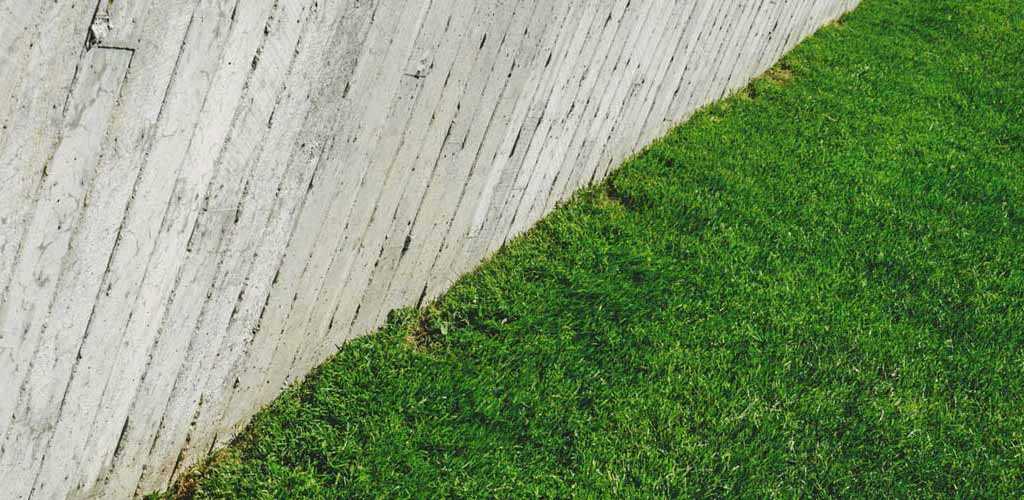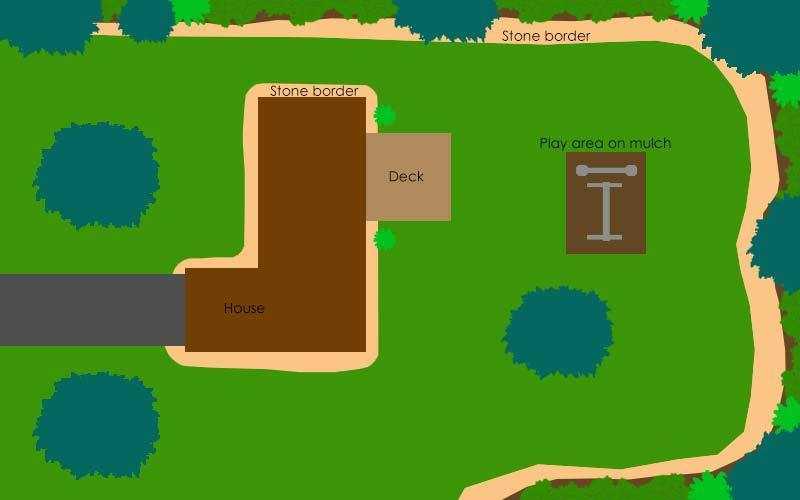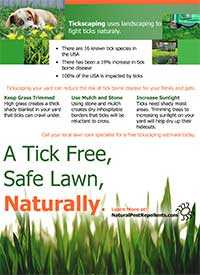How to Tickscape Your Yard

The growing tick population in North America is turning many yards into danger zones. Based on a recent report by the CDC the cases of tick borne illness more then tripled in recent years. Fortunately it is possible to reduce your exposure to ticks. Tickscaping your yard can reduce the risk of tick borne disease for your family and pets.
What is Tickscaping
Most people are familiar with landscaping and use it to create personalized outdoor spaces. Tickscaping however is not as widely know or practiced, so lets define it. Simply put, tickscaping is the process of making your yard less hospitable to ticks. Tickscaping is something every homeowner in North America should incorporate into their yard due to the increasing tick population.
Examples of Tickscaping Your Yard
 The illustration above shows a properly tickscaped yard. A few of the main points are
The illustration above shows a properly tickscaped yard. A few of the main points are
- Thick shade and ground cover is kept on the edge of the property.
- Stone is used to separate the shady wooded area from the manicured yard.
- The play area is placed towards the center of the yard, away from dense shade.
- The main yard is clear of lawn debris and clutter.
- A stone border is also used around the house.
Principles of Tickscaping Your Yard
The basis of tickscaping is to create spaces that repel ticks and their animal hosts. This often comes down to keeping a clean and tidy environment, both outdoors and in. Ticks hide in cool moist places such as under leaves, yard clutter, or anything else that provides shade. Lets take a look at some specific steps.
- Keep the yard mowed and timed at the edges High grass creates a thick shady blanket in your yard that ticks can crawl under.
- Clear leaf piles and yard debris A leaf pile may look dried up but flip them over and you’ll find a moist shady tick hideout.
- Avoid using ground cover Just like high grass ground cover
creates a think shady protective blanket for ticks to crawl through your yard. - Repair stone walls and seal cracks Depending on the size of the wall, the cracks could create tick hideouts or if large enough provide shelter for rodents. Since ticks actually contract diseases such as the bacteria that causes Lyme ( Borrelia burgdorferi ) from rodents such as mice and chipmunks its important to cover any openings that could be use by rodents.
- Keep firewood piles away from frequently traveled areas Similar to stonewalls woodpiles could provide hideouts for both ticks and rodents.
- Move play areas at least 9 feet from the edge of the yard Significantly less ticks are found in well trimmed grass then in wooded ares. This means its best to keep the kids play area surrounded by short, well trimmed grass.
- Use mulch or stone to create a border The appropriate use of stone and mulch can create dry inhospitable borders between the yard and wooded areas that ticks will be reluctant to cross.
- Increase sunlight on the yard Since ticks need shady moist areas increasing the sunlight on your yard will help dry up their hideouts.
- Use hardscaping near the house Hardscaping goes hand in hand with tickscaping to eliminate shady moist areas. Ticks will avoid the hot dry areas created by hardscaping and dryscaping.
- GET STARTED!
Getting your lawn perfectly tickscaped can be a tall order. Breaking the process down into bite size tasks can help. You can start tickscaping your yard by removing clutter and make sure the grass is trimmed. Then trim branches where necessary to increase sunlight on your yard. Create borders between your lawn and wooded areas or high grass. Don’t forget to close up holes, cracks or anything else that ticks and rodents can crawl into. Just remember, a tickscaped yard is a tidy yard!
You might also be interested in “How to apply diatomaceous earth“? or Natural Tick Repellent for Dogs or “What Eats Mosquitoes“?
